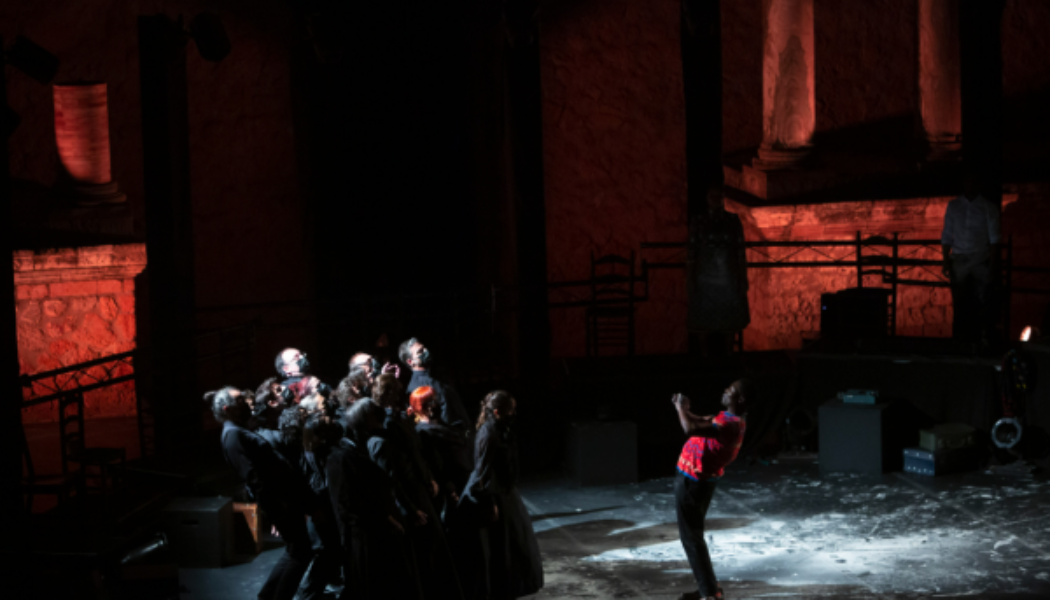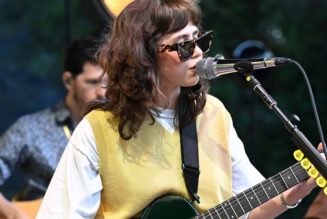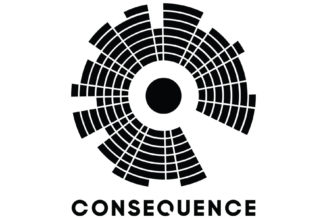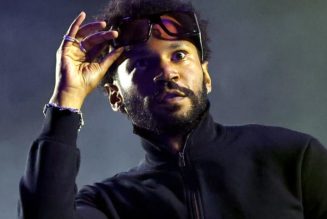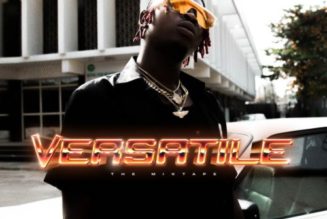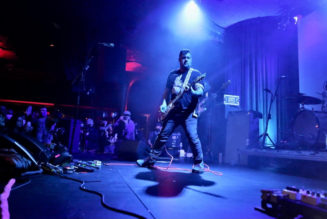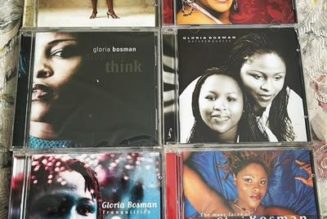Want to get our stories Straight to your inbox (see what we did there)? Sign up for our newsletter here.
As stories go it’s a multilayered one—tragic and sad but in a strange way also uplifting and still timely despite the events taking place well over a century ago.
The inspiration for Broken Chord by South African musical director Thuthuka Sibisi and choreographer Gregory Maqoma starts with the African Native Choir, which travelled the world, including Canada and the United States, from 1891 to 1893. The 16-strong group of Missionary-educated men, women, and children were taught a repertoire of English hymns and operatic choruses and then loaded on a boat to perform for audiences that often included dignitaries like Queen Victoria. The main objective was to raise funds for a technical school in Kimberley, South Africa.
Broken Chord reframes their choir experiences through Xhosa and contemporary dance, traditional African music and soundscapes, and stories mined from the personal tales of those who once found themselves stranger in even stranger lands like England, Canada, and the United States.
At the beginning of Broken Chord, four singers (Tshegofatso Khunwane, Lubabalo Velebhayi, Xolisile Bongwana, and Zandile Hlatshwayo) are seen dressed in clothing that’s more Northern English than Southern African. On the African Native Choir’s first world tour, that wasn’t the only indignity.
But while the story of the 1890s group of singers contains no shortage of pain and injustice, the goal of Broken Chord is to reflect on the past while finding a positive path forward. No one, Sibisi suggests, wants to leave the theatre feeling worse about a world that, for all the progress that has been made, still has a long way to go as far as racial equality goes.
“It’s a terse subject,” the relentlessly engaging composer acknowledges, speaking to the Straight on a Zoom call from a rainy day in South Africa. “It’s really difficult to deal with post-colonialism, racism, prejudice, and the strife of others. But look at us—the silver lining is that we’re doing the work. And that’s me, an idealist, speaking. I’d hate for audiences to walk out and go ‘Oh my God! They’re coming for me’ It’s like ‘No!’ For a second let’s try and look in the same direction.”
Sibisi’s journey as an artist started with him applying on a dare to Drakensberg Boy’s Choir School in South Africa. Everyone, including his parents, was surprised when he was accepted, that leading to a thriving career in the performing arts. On a subconscious level, he knew even as a child that he wanted to be an entertainer.
“I always wanted to work in the realm of the imaginary,” he says. “How I was going to work that out, I wasn’t sure. It was more about following intuition and a wistful dreaminess about what it was to be an artist.”
With an economist father and a teacher mother, Sibisi admits that his parents, while completely supportive of him, would have been happy to see him follow a safe civil servant path.
“The idea of going out and choosing to be an artist in South Africa is difficult because the support structures aren’t always there,” he offers. “So a lot of time it’s about the willful power to carry on, and a dedication to community. That starts at home, so I’ve been lucky.”
After graduating from Stellenbosch Universityn with a bachelor of music in 2011, he worked closely with celebrated South African composer Philip Miller. The two eventually collaborated on the Johannesburg exhibit African Choir 1891 Reimagined, which set unearthed gelatine photographs of the performers to music.
One of those who caught the museum show was choreographer Maqoma, who was moved enough that he began working with Sibisi to bring an often-overlooked story to the stage, mixing throwback music and contemporary dance. What hit them was the way that Black people are often treated when arriving on the shores of countries outside of their homelands.
Of the African Native Choir he says: “All we can do from this perspective is speculate. If we think about history, there is something about the hopefulness of leaving home to go do something that, fundamentally, should be great. But you also have to know these were educated Black members of society—they weren’t naive as to how the world functions. When they arrived in London they were dressed like Victorian citizens would have. And that was the first blow—thinking that you’re going to walk into a society that both accepts and acknowledges you.”
“In Zulu when you greet someone you say ‘Sawubona!’, which means ‘I see you,’” Sibisi continues. “There’s something about leaving home and going to another space where you assume you will be seen. That fell by the wayside whey they realized they weren’t seen for what they are, and if fact that they were seen to be things that they are not. The Empire was more interested in showing the ‘primitive and beastly’ nature of the countries that it had colonized. To show them as tokens of existence rather than human beings who have all sorts of feelings: joy, heartbreak, and all the feelings we all have.”
The composer says he’s reluctant to reveal too much about the story told in Broken Chord, or the show in general, because that’s giving away the surprises. He will allow that, while the prospect of cold weather is concerning, he’s excited about his trip to the West Coast were he’s working with 16 members of the Vancouver Chamber Choir, joining vocal soloists. On the dance side, Maqoma appears as a dancer and performer. It’s not lost on him that, while his path, and overall experience, have been radically different, he’s a South African travelling the world like those before him 125 years ago.
Except that this time, on multiple fronts, the idea of being seen isn’t just a dream.
“With Broken Chord we started with the story—we were legitimately interested in who these people were. And how Black people were shunned simply for being different. We soon realized that the work had the potential to speak to more than an individual story. The micro, in a way, became the macro. These singers, and how they were ostracised when they got to England, became how Black bodies are often ostracised when they are going to foreign spaces.
“As we zoomed out there’s a thread connecting 1891 and now,” he continues. “The tone and sadness that came from the chorus then in a weird way became metonymic for how the Black experience is now. But one question we kept coming back to was ‘How do we do this without being didactic. How do we talk about this without making people feel that you’ve thumbed them down with an actual historic fact where they have no room to consider themselves outside of the conversation. Ultimately we decided to make the work as porous as possible so the audience can feel not complicit, but part of the making of, not the work, but conversation that ripples from the work.”
But fittingly, Broken Chord is also about something more.
“There’s something about looking at the virtuosity of the singers onstage, and the thrill of being part of a show that visits a really overlooked moment in history. And then there’s something about, post-pandemic, getting to go ‘Oh my God—I get to sit in the same room with a bunch of people and just vibe.”
Presented by DanceHouse and Vancouver New Music, Broken Chord is at the Vancouver Playhouse from February 23 to 25.
